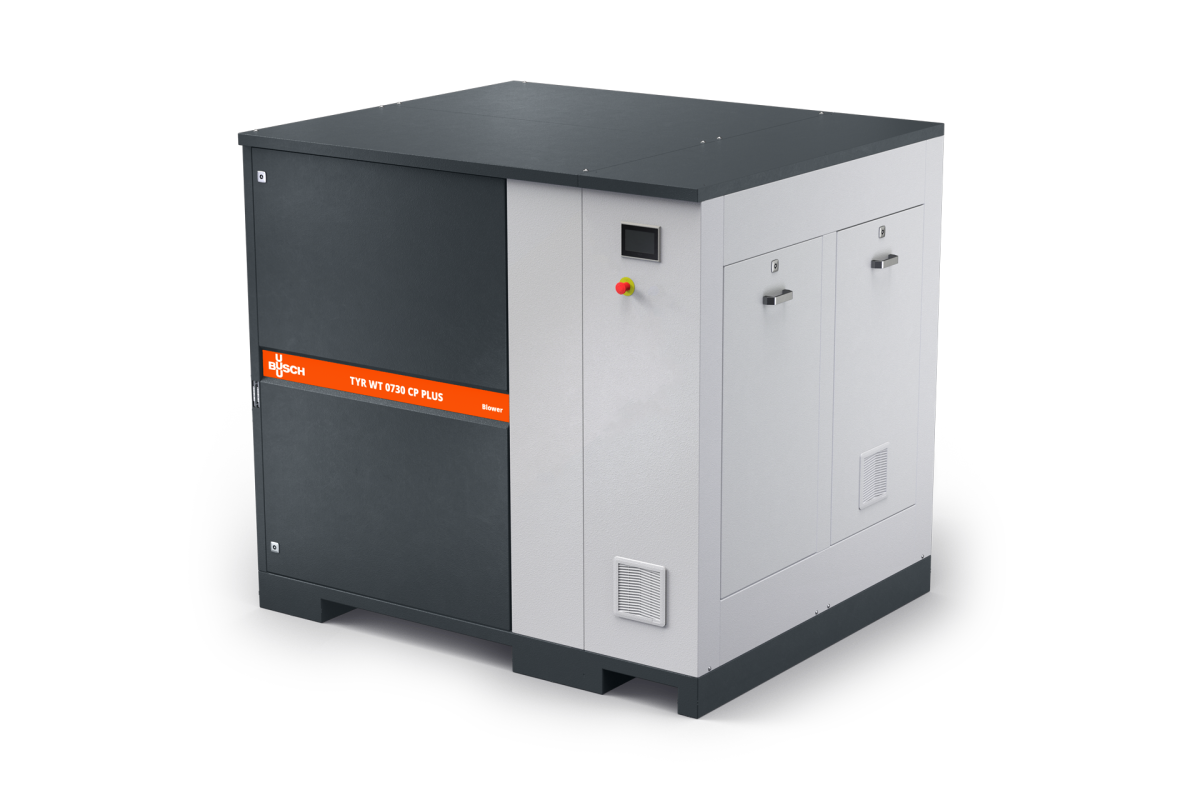The TYR PLUS rotary lobe blower with integrated variable speed drive (VSD) is the new, energy-efficient solution from the established TYR product family. This compact blower with a footprint of < 3 m2 offers flexible monitoring and controlling capabilities. The TYR PLUS is currently available for volume flows in the range of 900 to 4.000 m3/h. The four models in the PLUS series have a maximal relative differential pressure of between -500 and +800 hPa (mbar) and are available in either an overpressure or vacuum version.
Fast adaptability for cost savings
Many applications have operational peaks and troughs, where demand for overpressure or vacuum fluctuates dramatically. There can be as much as a 50% difference in power consumption between standard operation and periods of high demand. A VSD allows the blower to rapidly adjust its rotational speed accordingly. Compared to a traditional blower, which always runs at a constant speed, the TYR PLUS has high energy savings potential and can reduce operating costs.
Intelligent analysis
The TYR PLUS also comes with a range of integrated software features. Remote condition monitoring allows both for flexibility and an early warning about potential equipment problems. By continuously observing and recording parameters, software can build up a picture of normal running conditions. It then uses this data, such as power consumption, temperature, and inlet and outlet pressure, to alert the operator when a value exceeds its typical range. The monitoring and control features are accessible through a user-friendly color touch display located at a convenient height of 1.5 m.

The TYR PLUS rotary lobe blower with integrated variable speed drive (VSD) is available for volume flows in the range of 900 to 4000 m3/h. Source: Busch Vacuum Solutions.